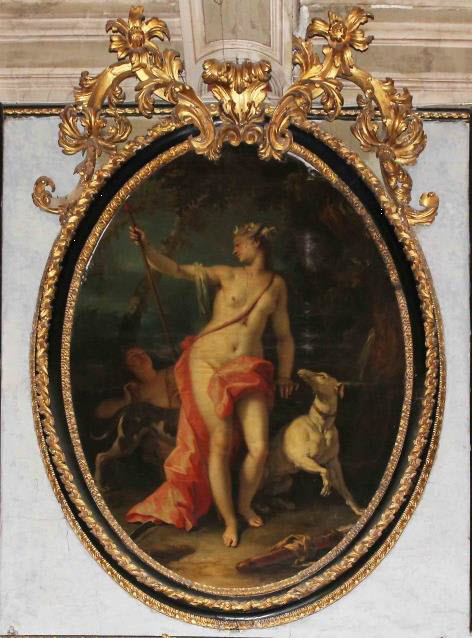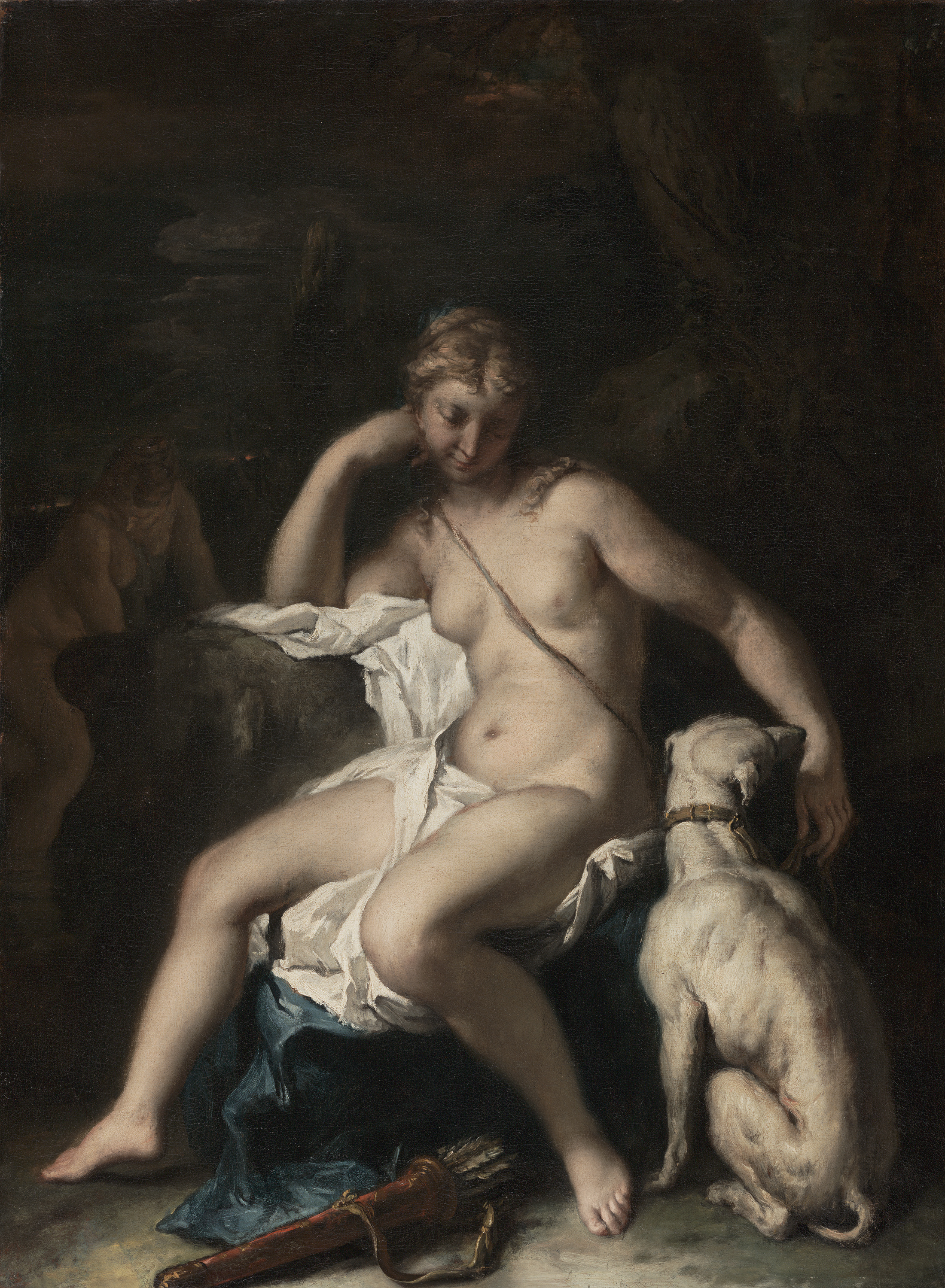Diana, the Roman goddess of the moon and the hunt, sits on a rock in a dark, sylvan setting, her quiver at her feet, caught in a moment of reflection. The virgin deity distractedly holds the leash of a lithe, muscular greyhound resting on its haunches, while one of her attendants enters into the middle ground at the left.

Sebastiano Ricci, one of Venice’s great narrative painters, rarely painted single mythological figures, and this picture is uncharacteristically spare and muted for the artist. Perhaps for this reason, the painting first appeared on the market in 1970 with an attribution to the Venetian painter Jacopo Amigoni (ca. 1685–1752). Jeffrey Daniels first published the painting as Ricci in 1976, an attribution sustained by David Jaffé and Annalisa Scarpa.1 Scarpa further connected this unsigned work to Ricci because of its similarity in style and subject matter to a significantly larger painting of Diana in the Palazzo Taverna in Rome (fig. 1), where an attendant and dog also accompany the goddess, who, in contrast to the Getty picture, actively strides forward in the act of hunting.
The dog’s nervous glance off to the side refers obliquely to the story of Diana and Acteon, a male hunter who came upon Diana and her attendants bathing in the woods. When he was discovered spying upon the women, the goddess transformed Acteon into a stag, and his dogs turned on the hunter and killed him. Common since the Renaissance, the subject justified the display of beautiful, nude women, while simultaneously reflecting on the risks of this visual pleasure. With Ricci’s subtle allusions only the dog seems aware of a spectator, leaving the goddess entirely at rest, displayed openly to the viewer.
Ricci’s creamy, tactile brushwork emphasizes the pleasure of beholding Diana’s body. The impastoed edge of the white drapery accentuates the curve of the goddess’s breast, abdomen, and thighs, while her bow strap is represented by the beige and brown paint lightly dragged across her torso. Likewise, the goddess’s pinwheel form almost makes contact with her dog: the gap between the paw and foot, as well as between the nose and wrist tantalizingly draw attention to the sense of touch.
The Palazzo Taverna version of this subject has been plausibly dated to the period of 1717 to 1720, when Pietro Gabrielli, an important Roman patron of Ricci, resided there. For this reason, Scarpa has questioned Daniels’ circa 1705–10 date and has reasonably considered it painted in 1717–20.2
- Jon L. Seydl
-
See Jeffrey Daniels, Sebastiano Ricci (Hove: Wayland Publishers, 1976), p. 41; David Jaffé, Summary Catalogue of European Paintings in the J. Paul Getty Museum (Los Angeles: J. Paul Getty Museum, 1997), p. 78; Annalisa Scarpa, Sebastiano Ricci (Milan: Bruno Alfieri, 2006), p. 233. ↩︎
-
Scarpa 2006 (note 1), p. 293. ↩︎
